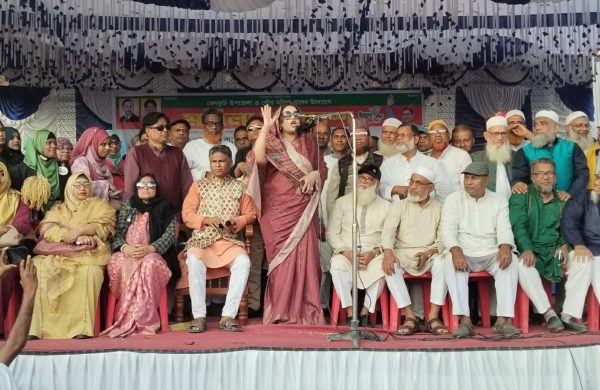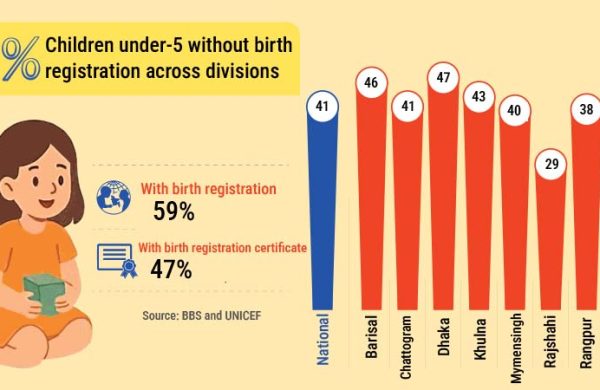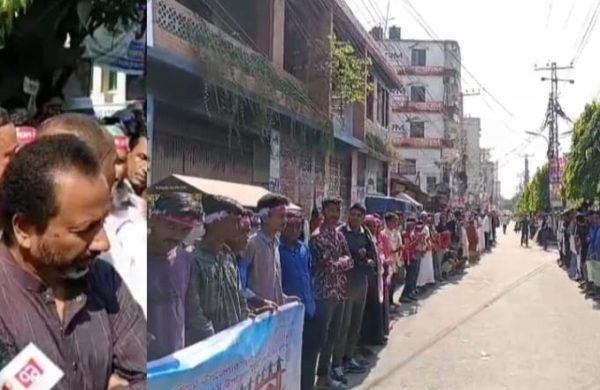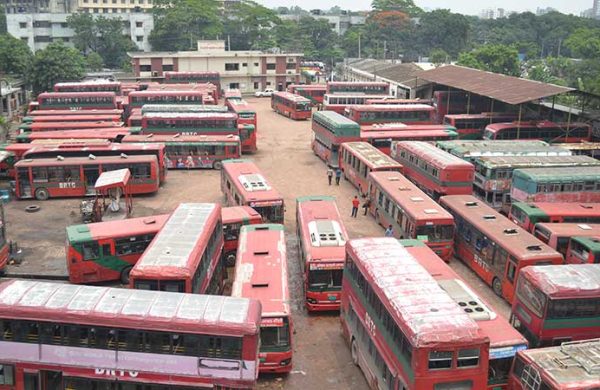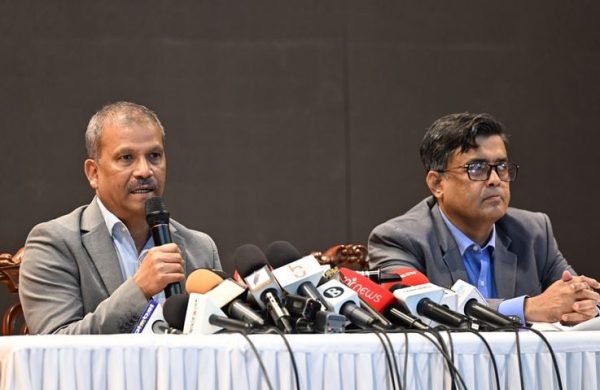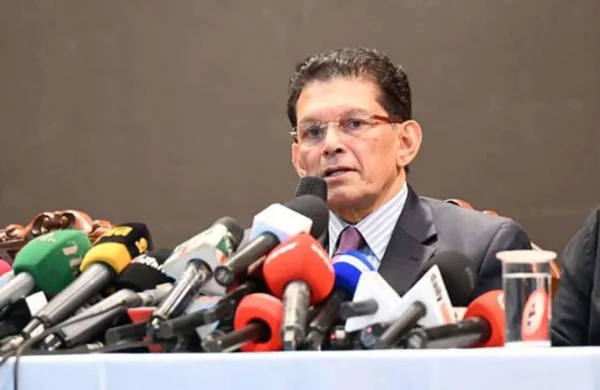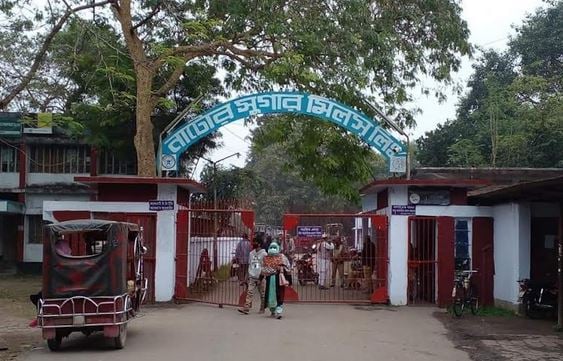Hilsha prices skyrocketing
- Update Time : Sunday, November 9, 2025

Staff Correspondent:
Once an affordable delicacy for ordinary people, hilsha, the national fish of Bangladesh, is now becoming out of reach. Prices have hit record highs, even though hilsha comes from nature, needing no feed, no farming, and no human investment.
While consumers struggle with soaring prices, the fishermen who risk their lives to catch hilsha remain poor. It is a striking paradox — a natural gift that benefits everyone except those who catch it and those who eat it.
Amid this situation, no government agency wants to take responsibility for the unusually high price of this naturally grown fish. The Consumers Association of Bangladesh says the matter falls under the Fisheries Department — a claim the department’s chief denies. The Directorate of National Consumers’ Right Protection also distances itself, saying hilsha is not listed as an essential commodity. However, the directorate occasionally conducts drives against luxury outlets for overpricing.
A PRICE WITHOUT A PRINCIPLE
Who determines the price of hilsha? What logic dictates its constant rise? And whose pockets swell in the process?
A recent investigation by journalists across major hilsha-producing regions — including Barishal, Bhola, and Chandpur — found a deeply shady pricing chain. In essence, two groups sit at the core of this multibillion-taka network: trawler owners and fish wholesalers, known locally as aratdars.
The cycle begins when poor fishermen, often owning nothing but their labour, sign contracts with trawler owners before the fishing season. These owners, in turn, receive advance cash — locally called dadon — from the wholesalers, on the condition that all fish caught must be sold through their designated auction houses.
Once the fish is landed, it enters a closed circle of auctions. Only a handful of buyers — mostly linked to the same wholesalers — are allowed to participate. In this confined system, the “market price” is effectively decided by the players themselves. Outsiders rarely know how much manipulation takes place behind the scenes.
“Before, a few syndicates used to fix the auction outcomes,” admits Aminul Islam Tuhin Hawlader, a wholesaler at Bhola’s Bokshi fish terminal. “Now it’s less frequent, but the fish has become scarce. If this continues, fishermen will face even worse days ahead.”
Each stage adds its own profit margin. From trawler owner to wholesaler, from bulk buyer to retailer — every hand takes Tk 50–100 per kilogram in commission or markup. By the time the fish reaches Dhaka’s markets, the price skyrockets.
THE VANISHING CATCH AND RISING COST
In the once-rich fishing belts of the Meghna and Tetulia rivers, trawlers now return half-empty. Barishal trader Zahir Shikdar recalls, “A decade ago, boats would come back heavy with fish every trip. Now, many return with only a few baskets.”
Trawler owners say it’s no longer a business of guaranteed profit. One owner from Bhola, Julfikar Mahmud, shared that his large trawler — carrying 28 fishermen — spends nearly Tk300,000 per trip on diesel and food alone. Yet the returns have shrunk dramatically.
“Three years ago, one trip brought in fish worth Tk32 lakh. Now we’re lucky to get four or five lakh. Sometimes, we catch only fish worth Tk fifty thousand,” he says.
The financial burden ultimately falls on the fishermen. Each receives a small advance for family expenses before going to sea — usually Tk2,000 per person. If the catch fails, they return home empty-handed, often in debt.
When profit does come, half of it goes to the trawler owner, another cut to the wholesaler, leaving the fishermen with barely Tk2,000 or Tk3,000 each after weeks of toil.
LIFE ON THE WATER’S EDGE
Hilsha fishing is not just labour-intensive; it’s perilous. Fishermen face storms, unpredictable tides and treacherous sea during full moons and new moons. Their wooden boats drift miles into the estuary, where the risk of death is real and rescue rare.
In Chandpur’s Anandabazar village, Ismail Hossain and his crew of four set out daily on a small engine boat. On a good day, they return with seven or eight kilograms of small hilsha, earning Tk3,500 after hours of work. Once diesel costs are deducted, each man takes home only Tk700. “Sometimes it’s a thousand. Sometimes it’s nothing,” Ismail says.
Larger teams that venture into the sea for a month or more fare little better. Twenty-two fishermen from Chandpur’s rivers recently returned from a two-month expedition near Hatiya, earning Tk50,000 each for the entire period — less than Tk1,000 a day.
“Once we’re home, we can buy food for a few days. Then it’s back to waiting for the next season,” says a fisherman in Bhola.
COUNTING THE MILLIONS AT THE AUCTION
After a 22-day government ban on hilsha fishing to protect breeding, auctions resumed on 25 October. In Barishal alone, 81 wholesalers are now selling at least Tk20 million worth of hilsha daily. That translates to roughly 20 tonnes of fish a day.
Large hilsha weighing around one kilogram fetch about Tk90,000 per maund (37.32 kg) at wholesale — roughly Tk2,000 per kilogram. Smaller fish of 400–500 grams sell for Tk750–875 per kilogram. By the time these reach Dhaka’s retail markets, the same fish costs Tk2,200 to Tk2,400 per kilogram.
Online retailers in Chandpur, authorised by the district administration, sell one-kilogram hilsha at Tk2,600–Tk2,750. Even 300-gram hilsha now costs over Tk1,100 a kilo — once the price for the best river catch.
The question remains: who benefits? The answer is simple — everyone but the fisherman and the consumer.
A NATIONAL RESOURCE, A PRIVATE GAIN
Experts say the hilsha market reflects a systemic failure. The fish grows in nature — in rivers, estuaries, and seas — without human intervention. Yet the benefit of this shared natural resource is cornered by a handful of people.
SM Nazer Hossain, vice-president of the Consumers Association of Bangladesh (CAB), points out that the pricing of hilsha has no official basis. “The wholesalers, trawler owners, and bulk buyers fix the prices arbitrarily,” he says. “Often, it’s the same investors controlling all three levels, so they can manipulate the chain from sea to market. Consumers have no choice but to pay whatever they ask.”
“But they are becoming poorer while hilsha becomes dearer. This is economic injustice, plain and simple,” he says.
Nazer Hossain claims that several proposals on these issues had already been submitted to the Fisheries Department. He says, “This matter falls under the jurisdiction of the Fisheries Department, as it deals with fish resources. They could sincerely assess the actual cost of catching hilsha and then set its price based on that. But the department shows no interest in taking responsibility.”
GOVERNMENT WITHOUT ACCOUNTABILITY
However, the Department of Fisheries says price control is beyond its remit. Director General Abdur Rauf explains: “Our job is to ensure sustainable production and protection. We don’t set market prices. That’s for local administrations or law enforcement to monitor.”
But critics say this bureaucratic buck-passing has allowed the problem to fester. Without a transparent pricing mechanism, the hilsha trade has become a breeding ground for hidden commissions, syndicates, and unrecorded money flows.
If fishermen received even a modest share of the profit, the rising price might be justified, they argue.
“From the river itself, money changes hands — from law enforcers to local influential groups,” says a source involved with production and marketing of hilsha. “We call it ‘silent costs’. Everyone takes a share before the fish even reaches the market.”
These invisible payments inflate prices further, but they rarely surface in official records, said the source.
Officials from the Directorate of National Consumers’ Right Protection insist their role is limited. “Hilsha isn’t a controlled commodity,” says its director, Mohammad Azizul Islam. “We act only if there’s illegal stockpiling or a specific consumer complaint. Price-setting isn’t within our jurisdiction.”
He said that during a recent inter-ministerial meeting, trawler owners and traders openly admitted that prices remain high due to scarcity — and because “people are still buying.”
“It’s a vicious circle,” Islam says. “As long as the demand stays strong, no one wants to regulate the price.”


